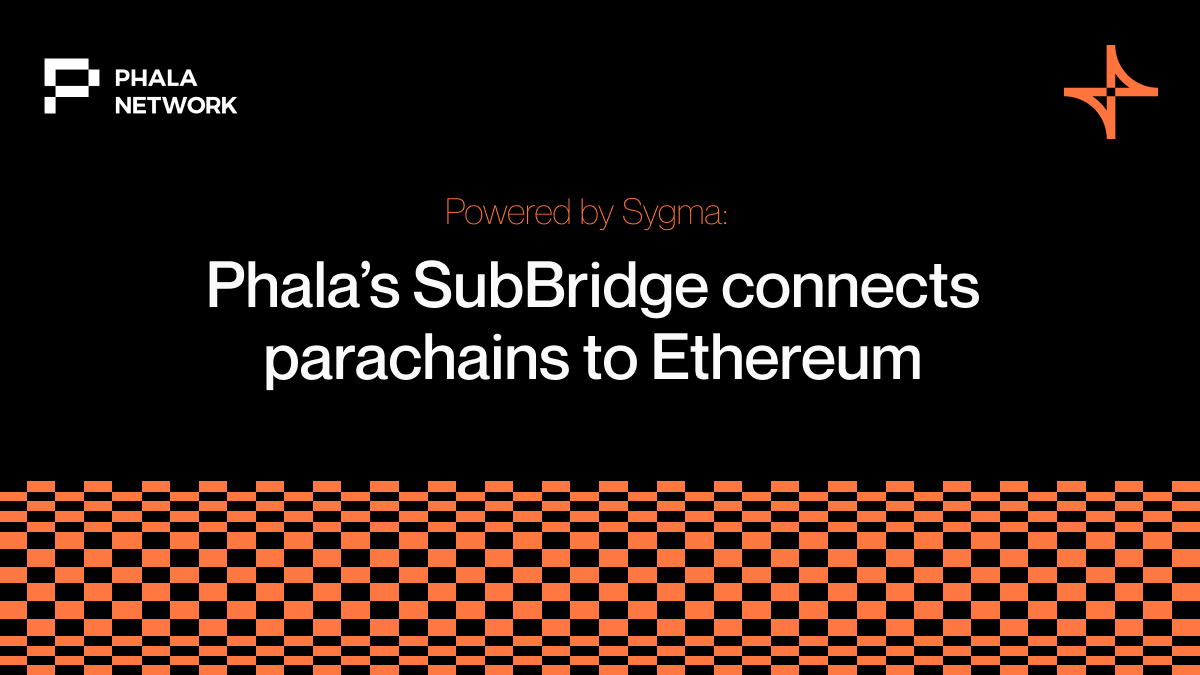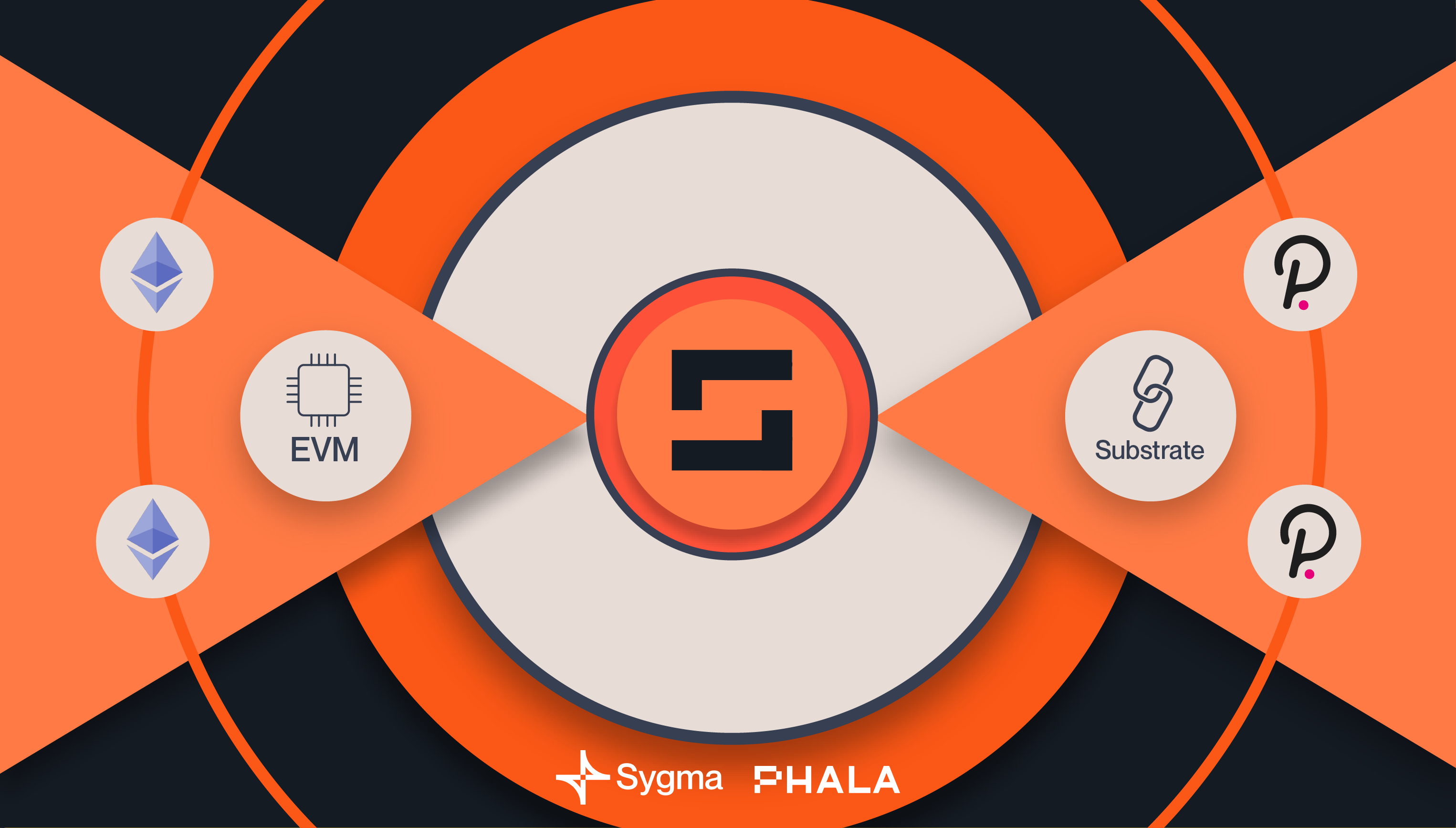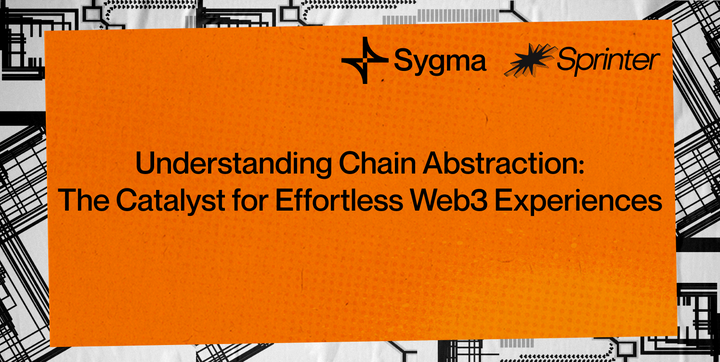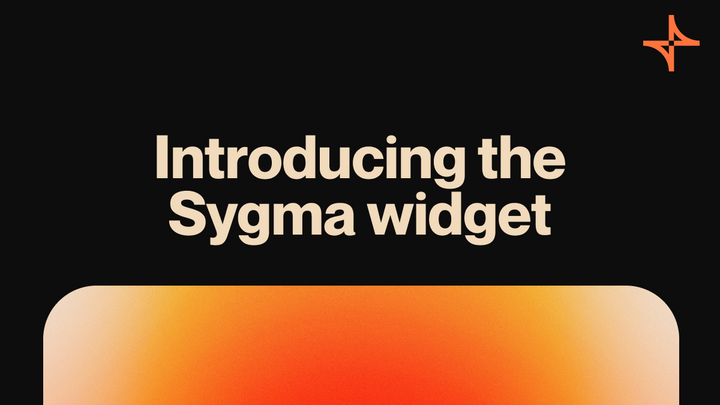Powered by Sygma: Phala’s SubBridge connects parachains to Ethereum

“Sygma has not only empowered our blockchain capabilities but has also solidified trust within our community.” - Phala Network
Phala Network and SubBridge
The Phala Network is a blockchain protocol that centers on trust and security in cloud computing. Users can contribute computer processing power, stake tokens to secure the network, and bridge tokens to and from the Phala Network through SubBridge.
Interoperability and ecosystem growth are central tenets of the Phala Network. Phala is a Polkadot L1 parachain that has issued tokens natively (PHA), on Ethereum (ERC-20 PHA), and Kusama (Khala PHA).
Phala won parachain auctions for Kusama and Polkadot in 2021 and 2022, respectively. The mainnet is built using Substrate, a modular blockchain development framework developed by Parity Technologies.
Phala faces new challenges
After winning their parachain auction slots, Phala Network decided to enhance token liquidity by migrating ERC-20 PHA to the Polkadot ecosystem. The mainnet launch came with a grab-bag of problems to address:
- Phala needed a native, two-way cryptocurrency bridge between Polkadot and Ethereum.
- The EVM (Ethereum Virtual Machine) is/was the largest source of Phala’s users.
- Thirty-eight million ERC-20 PHA remained to be moved from Ethereum from the parachain slot auction.
Problems in Polkadot
The Polkadot ecosystem continues to face liquidity issues, requiring secure and efficient transference in and out of Polkadot/Kusama and their parachains. Liquidity issues can stem from various factors:
Interoperability challenges
Polkadot aims to enable interoperability among blockchains, including parachains and external networks. Developing and optimizing interoperability solutions and bridges is crucial for efficient asset transfers and trading between chains.
Relative newness
Polkadot/Kusama is a relatively new blockchain network. Compared to more liquid environments, many projects in Polkadot are in the early stages of development.
Limited exchange support & isolation
While Polkadot/Kusama and its parachains have seen increased exchange support, token liquidity pales compared to more established networks. Additionally, while parachains are interoperable within their network, Dotsama is somewhat siloed against the larger blockchain environment.
The SubBridge solution: powered by Sygma

Phala planned development for SubBridge to connect their network to blockchains outside the Polkadot/Kusama parachain network. Powering the bridge itself was ChainBridge, an earlier product originally developed by ChainSafe. Later, ChainBridge would provide the basis for developing Sygma.
The Sygma team, in collaboration with Phala Network, developed the Substrate pallets to power SubBridge.
SubBridge is a first-of-its-kind interoperability solution developed by Phala Network to secure and efficiently transfer assets and data between different blockchain networks. At its core, SubBridge is a router linking different cross-chain bridges to other registered chains.
The upgrade to Sygma dramatically reduced SubBridge's transaction costs. Where the earlier version of SubBridge relied on multiple voters to confirm cross-chain transactions, Sygma’s MPC-based relayer could perform the same action through a single transaction.
Sygma has passed audits from KALOS, Least Authority and Veridise. Sygma has resolved all vulnerabilities and concerns raised by the audits.

Sygma has not only empowered our blockchain capabilities but has also solidified trust within our community. We are proud to partner with a team that stands at the forefront of blockchain interoperability solutions.” - Phala Network
SubBridge implementation: major milestones
August 29, 2022: Phala Network successfully transfers 38 million PHA from Ethereum into the SubBridge smart contract.
#PhalaANN
— Phala Network (@PhalaNetwork) August 30, 2022
🔊 The Phala team completed a migration that contained 38million $PHA (the remaining token for parachain slot auctions) from Ethereum to Phala’s smart contract bridge - https://t.co/hy3IXJVyag on August 29th, 2022 (SGT).
✨ Learn morehttps://t.co/ChSR6QrNzx
September 1, 2022: SubBridge two-way transfers go live to all users, allowing them to swap PHA and Khala PHA for ERC-20 PHA at 1:1.
December 12, 2023: Phala initiates a second massive liquidity transfer from ChainBridge into Sygma’s smart contracts.
🔔 $PHA liquidity is moving from ChainBridge to Sygma Bridge! @buildwithsygma
— Phala Network (@PhalaNetwork) December 12, 2023
This transition brings enhanced efficiency & UX. After six smooth months on #SubBridge, we're set for the next phase ✨
The volume of tokens being transferred:
1️⃣ Khala: 567,411,080.628198082714
2️⃣…
SubBridge, powered by Sygma, connects Phala and other Polkadot/Kusama parachains to a vast market of potential customers and liquidity from Ethereum and other registered blockchains.
- SubBridge makes native parachain/Ethereum transfers possible for Phala Network.
- Phala maintains its connection to Ethereum-based users.
- Thirty-eight million PHA were securely transferred into SubBridge.
From a macro perspective, SubBridge also permits the seamless two-way motion of liquidity into Polkadot/Kusama. While applications on Polkadot are maturing, integrating Sygma’s cross-chain asset and data transfer solution can prime those applications for growth.
Today, Sygma supports over 140 million USD in total locked value via Phala Network.
“Utilizing Sygma as our bridge solution has been a game-changer for Phala Network. It has flawlessly facilitated over 100 million USD in cross-chain transactions, showcasing unparalleled reliability and efficiency." - Phala Network

How SubBridge works
SubBridge can transfer assets and data across multiple sources and destinations. SubBridge allows users and developers to bridge from EVM into a Substrate chain (e.g. Phala). From there, using the underlying XCM protocol inherent within Substrate-based chains à la Polkadot/Kusama, it's possible that SubBridge can route your asset to a different parachain.
The video above demonstrates Sygma’s proof-of-concept with the PHA token transferring from EVM to PHA to Astar, its end destination.
SubBridge functionality relies on Sygma, an open-source interoperability protocol that connects various blockchain networks. Through Sygma, SubBridge establishes connections between Phala Network and its interconnected chains, allowing users to transfer assets and data across these platforms with minimal friction and fees.
Validators: Validators play a pivotal role in ensuring the integrity and security of transactions on SubBridge. These validators are responsible for validating and verifying the legitimacy of cross-chain transactions, thereby preventing potential exploits or fraudulent activities.
Relayers: Relayers are intermediaries for transferring messages and transactions between blockchain networks. They relay information between Phala Network and other interconnected chains, ensuring seamless interoperability.
Bridge Pallets and Contracts: Bridge contracts act as smart contracts deployed on Phala Network and the EVM. These contracts enforce the rules and conditions of cross-chain transactions, ensuring transparency and reliability throughout the process.
Swapping with SubBridge
Initiation: The cross-chain transfer process begins when a user initiates a transaction on subbridge.io to transfer assets or data to another blockchain network.
Validation: Validators on both Phala Network and the target blockchain network verify the transaction's authenticity and legitimacy. This validation process ensures the integrity of the transaction and prevents double-spending or unauthorized transfers.
Relaying: Once the transaction is validated, relayers facilitate the transfer of assets or data from the Phala Network to the target blockchain network or vice versa. This process involves transmitting the relevant information across the bridge contracts (EVM) and pallets (Substrate) deployed on both networks.
Confirmation: Upon successful relay, the transaction is confirmed, and the transferred assets or data become accessible on the recipient blockchain network. Users receive confirmation notifications, assuring the completed transfer.
Build with Sygma
Visit us at buildwithsygma.com 🛠️
Sygma is the interoperability layer for building cross-chain applications. With Sygma, developers can leverage secure and efficient multi-bridge infrastructure to extend their applications beyond a single blockchain.
Next-generation composability and interoperability will provide applications with the needed features, such as swapping LP pairs across different networks. Whatever solution projects have in mind, Sygma gives you the power to quickly deploy the multi-chain infrastructure that lowers the barrier of entry for both developers and users.




